You’re likely aware that window tinting can offer privacy and protection from the sun, but did you know that the effectiveness of any tint is determined by its percentage?
This figure, known as Visible Light Transmission (VLT), indicates the amount of light that can pass through your tinted windows.
While you might be tempted to go for the darkest tint possible, bear in mind that each state has its specific legal limits. So, how do you decide what’s best for your vehicle without running afoul of the law?
Thus, it is important to know all the pros and cons before choosing your tint percentage.
Let’s venture into the intriguing balance between personal preference and legal requirements.
Key Takeaways
- According to a community-based ranking based on 155 votes, the most popular window tint percentage is 35%, followed by 20%, 50%, and 85% being the least.
- A study by the Virginia Departments of Motor Vehicles and State Police found that window tinting below 70% can reduce visibility, especially at night.
What is the meaning of Window Tint Percentages?
You might wonder, what does window tint percentage mean?
It’s simply the measure of how much light a window tint allows to pass through your car’s windows.
It is the transparency level of window film. The lower the percentage, the less transparency. The lowest is 5%, whereas the highest is 50%.
This can greatly impact not only your car’s aesthetics but also your driving experience and safety on the road.
Purpose and benefits of window tinting
Understanding window tint percentages is crucial as they determine the amount of light that penetrates your car, offering various benefits like heat reduction, UV protection, and enhanced privacy.
Window tinting, particularly car window tinting, serves a multitude of purposes. It provides a barrier against harmful UV rays, protecting your skin and the car’s interior.
The darker tints offer better heat rejection, keeping your car cool even on the sunniest days. This feature also enhances fuel efficiency as you’ll need less air conditioning.
Moreover, window tinting provides privacy, keeping prying eyes away from your vehicle. So, whether you’re looking for UV protection, heat rejection, or extra privacy, knowing the right window tint percentage can help you achieve your desired results.
Legal Window Tint Percentages by State
Across the United States, the legal window tint percentages can vary significantly, presenting a complex landscape for drivers to navigate. Each state has its laws concerning visible light transmission (VLT), which is the amount of light allowed to pass through your window tint.
To help you better understand, here are three key points:
- Window Tint Percentage: This refers to the amount of light a tint allows to pass through. Your state’s law may allow a VLT of anywhere from 20% to 70%.
- Legal Consequences: If you’re caught with illegal tints, penalties range from fines to mandatory removal. Always check your local state laws.
- State Laws: They vary greatly. For example, California allows 70% VLT on front side windows, while Texas allows 25%.
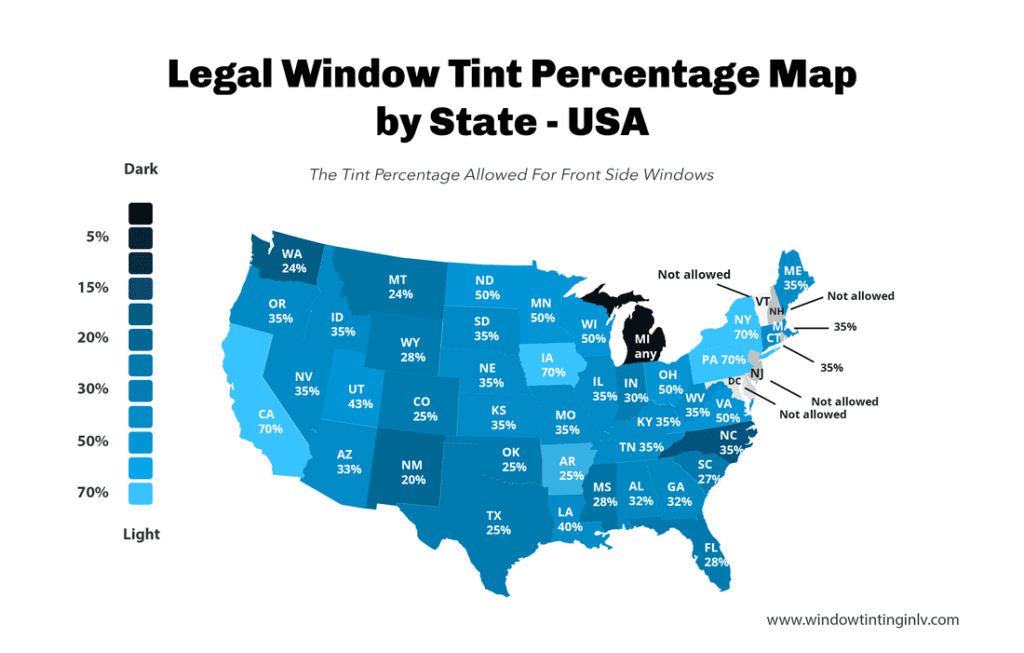

Window Tint Percentages Examples
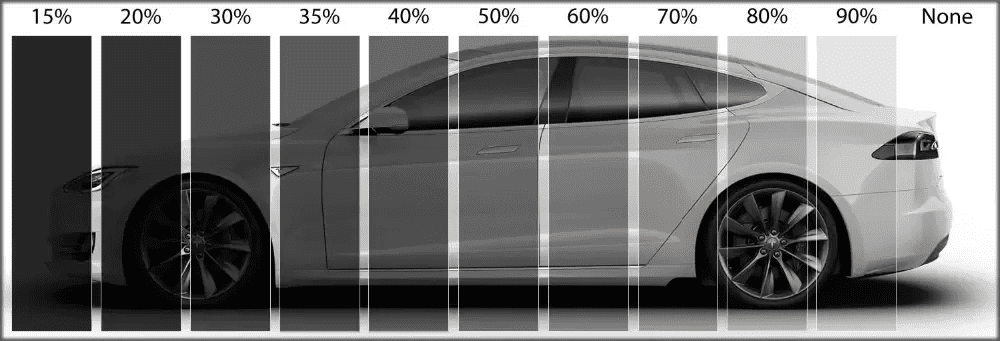
No tint:
You will enjoy a clear view, but at the same time, the UV rays that hit directly on the car window can affect you and also the interior of your car. Sometimes you may also encounter glare while driving. In addition, your car will absorb more heat in the summer and become vulnerable to you.
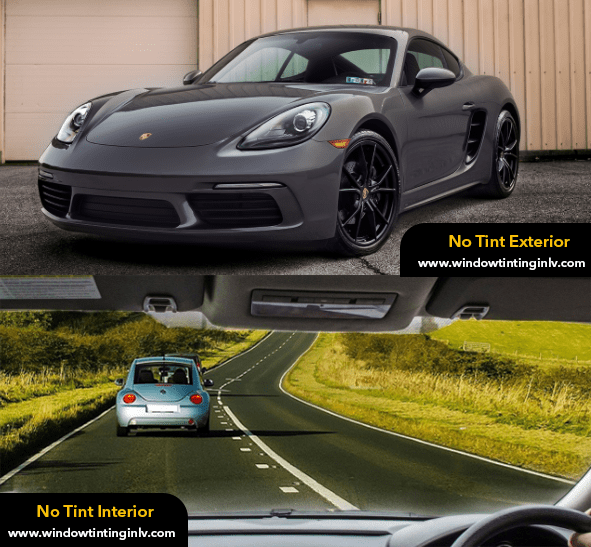
50% tint:
This is the best tint percentage of all. However, this percentage does not create a darker effect inside your vehicle, nor does it completely block the UV rays. Nevertheless, it is an excellent source of blocking a large portion of the UV rays coming directly from the sun. It also lowers a considerable amount of heat inside your vehicle.
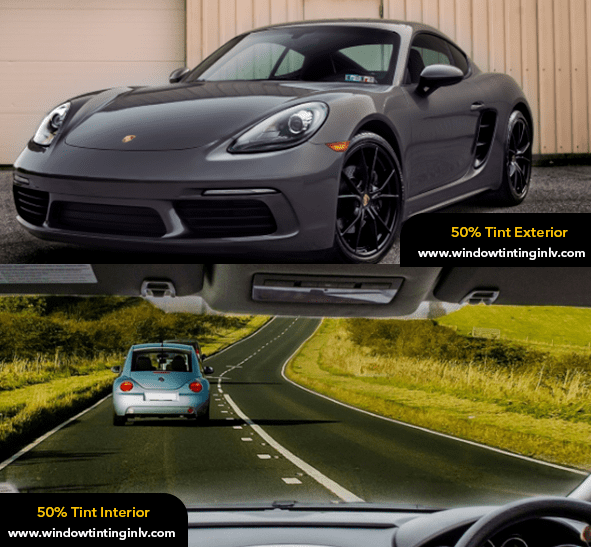
MKBrother 50% – Heat & UV Block Professional Window Tint Film
35% tint:
This tint is much better than the 20% tinting because it will not be difficult for you to see through the windows. It will also give you a darker appearance inside your car so that you can enjoy your privacy with ease. Overall, your car will have a sleek and alluring look that will help enhance your vehicle and offer many other benefits.
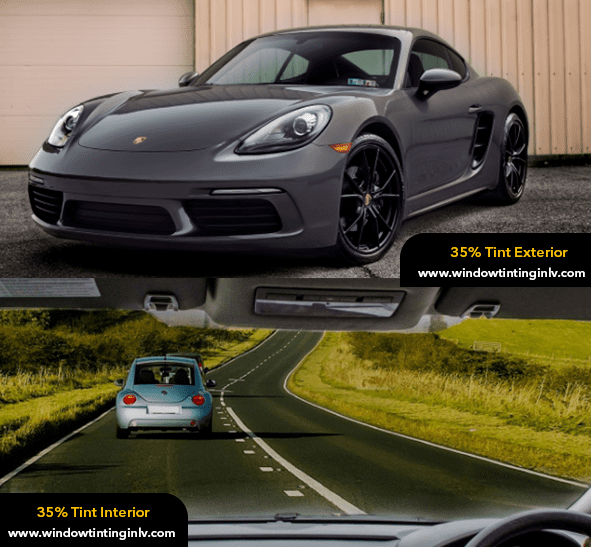
MKbrother 35% – Heat & UV block Professional Window Tint Film
20% tint:
This percentage of tint allows you to see through the windows at a closed distance, but it will be difficult for you to see a distant object. Therefore most people will not choose this percentage of window tinting.

MKBrother 20% Tint – Heat & UV Block Professional Window Tint Film
5% tint:
This percentage of tinting is illegal, but it is allowed in some exceptional cases, such as in limousines. This percentage blocks the full view, and you cannot see through the windows. This leads to a high degree of privacy but is still not allowed in the majority of cases.
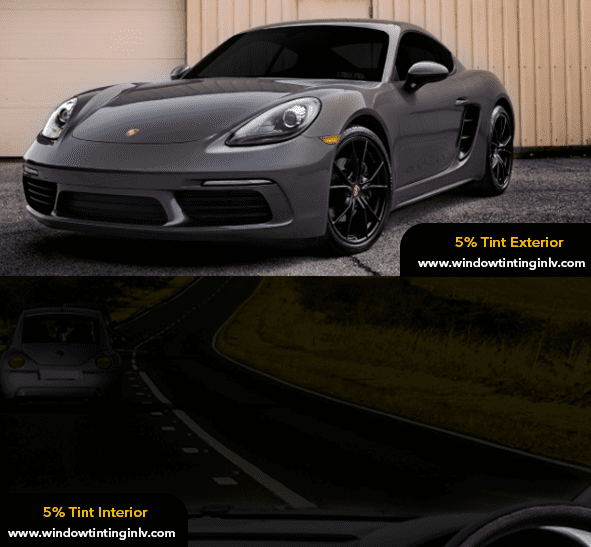
MKBrother 5% Tint – Heat & UV Block Professional Window Tint Film
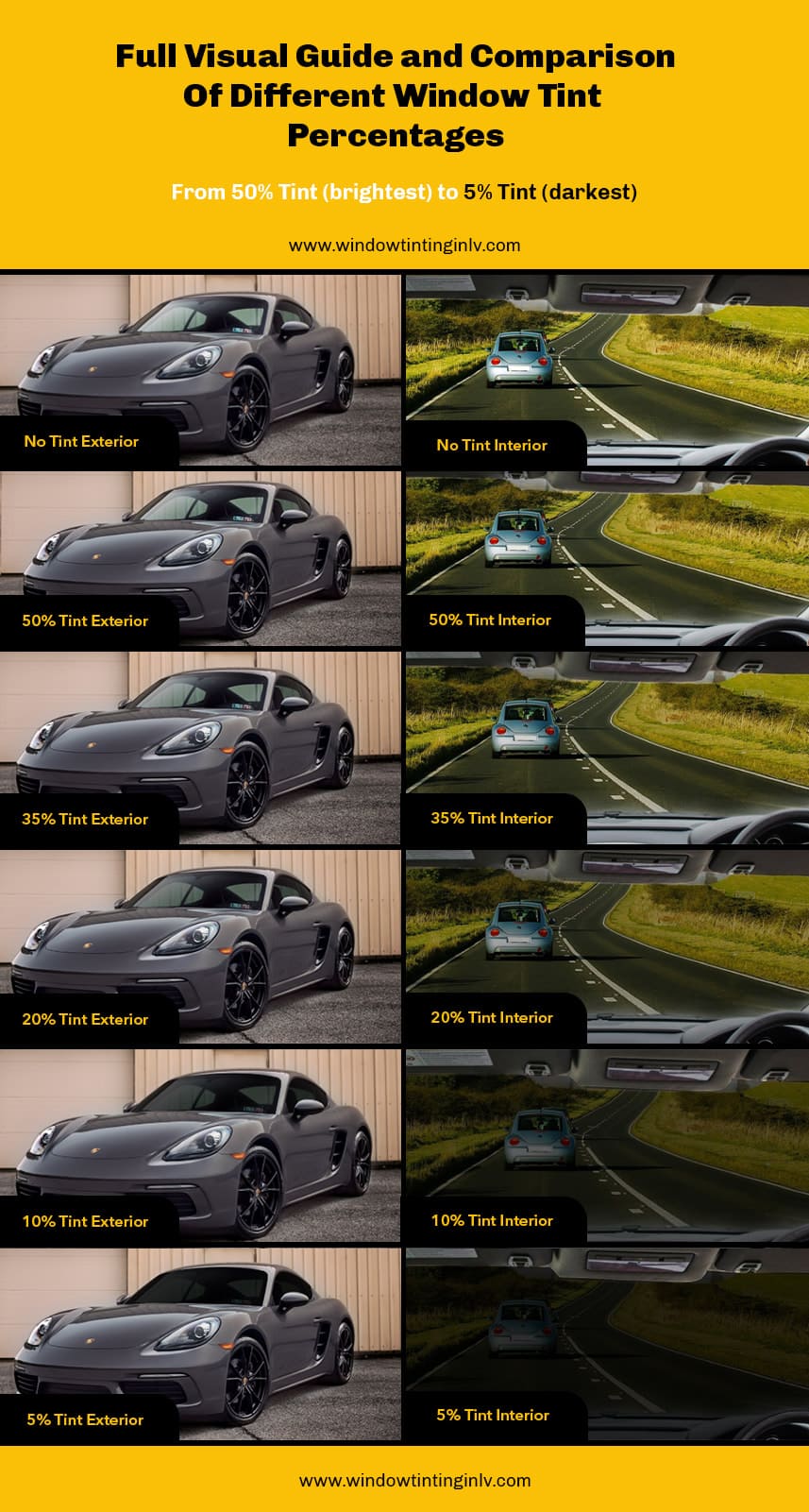
Factors to Consider When Choosing Window Tint Percentage
When choosing your tint percentage, it’s important to consider a few key factors.
Think about the level of darkness you want, the amount of heat you’d like to block, and how much UV protection is necessary for your needs.
Also, consider your desired level of privacy and the type of vehicle you’re driving.
Darkness level
One crucial factor you should consider when choosing window tint percentage is the level of darkness you prefer.
The darkness level significantly affects the amount of light that gets through your windows. It’s not just about aesthetics; it’s also about functionality and comfort.
From a range of tint percentages, here are three things to consider:
- Dark window tints can provide more privacy and reduce glare, but it can also limit your visibility, especially at night.
- A moderate level of tinting can offer a balance between privacy and visibility, making it a popular choice.
- Light window tint, while not offering as much privacy, allows more light in and provides better visibility.
Always remember, your chosen darkness level should conform to local regulations to avoid potential fines.
Heat rejection
Beyond the darkness level, heat rejection is another critical factor you should consider when selecting the right tint percentage.
A high heat rejection rate means your window tint can effectively block out the sun’s heat, keeping your car cooler.
This is especially important if you live in a hot climate or are sensitive to heat.
Your choice should strike a balance between the heat rejection rate, the harmful UV rays blockage, the visible light transmission, and the car tinting laws in your area.
The table below can help you compare different options:
| Window Tint | Heat Rejection Rate (%) | Complies with Car Tinting Laws |
| Tint A | 50 | Yes |
| Tint B | 70 | No |
| Tint C | 60 | Yes |
UV protection
Not only does the right window tint percentage keep your car cool, it also shields you from harmful UV radiation.
Window tints are effective against UV rays, protecting both your skin and interior from potential damage.
When considering UV protection, remember these three factors:
- Window Film: Not all films are created equal. Choose a window tint that specifically mentions UV protection.
- UV Rays and Temperature Control: A good window tint is great for temperature control, reducing the heat in your car while also blocking UV rays.
- Skin and Interior Protection: Long-term exposure to UV rays can harm your skin and fade your car’s interior. Ensure your chosen tint provides adequate protection.
Choose wisely, and enjoy the benefits of a well-tinted window.
Privacy
When choosing a tint percentage, consider how privacy factors into your decision, as darker tints can provide a concealed interior, keeping prying eyes at bay.
A low percentage of window tint, such as a dark tint, may be ideal if you value privacy above all else.
It can significantly obscure the interior of the car from view, making it difficult for people to see your vehicle from the outside.
However, it’s crucial to balance privacy with safety and legal considerations, as overly dark tints can limit visibility and may not be allowed in certain jurisdictions.
Your chosen window tint percentage should provide an optimal mix of privacy, safety, and legality. It’s always worth checking local regulations before making your final decision.
Vehicle type
In addition to considering privacy, you’ll also want to think about your vehicle type when deciding on a window tint percentage.
Different types of vehicles have specific window tint regulations, which means the type of car you drive significantly impacts the tint percentage you can legally use.
- Sedans: State laws and regulations often impose stricter limits on sedans. The front side windows and windshield generally require a higher VLT (Visible Light Transmission) percentage.
- SUVs and Vans: These types of vehicles usually have more lenient window tint regulations. You may be able to use a darker tint for the rear windows.
- Commercial Vehicles: Depending on your state, commercial vehicles might have unique regulations, separate from personal cars.
How to Measure Window Tint Percentage
You’ve chosen your window tint, but how do you measure its percentage?
The best way is by using a tint meter, a practical tool that gives accurate readings.
Using a tint meter
To accurately gauge the percentage of your window tint, it’s crucial to use a tint meter.
This device measures the level of darkness and the amount of visible light that can pass through your windows. Here’s how to use it:
- Power up the tint meter: Attach the two halves of the meter on either side of the window.
- Read the display: It’ll show the window tint percentage directly.
- Cross-check the laws: Ensure your tint level abides by local regulations.
DIY Window Tinting vs. Professional Installation
So, are you considering window tinting and pondering whether to go the DIY route or hire a professional? It’s a common debate, often rooted in cost considerations and the intricacies of window tint percentages.
Firstly, DIY window tinting can be cost-effective, but it requires skill and knowledge about VLT percentage and state regulations. Make a mistake, and you may end up with undesirable results or fines.
Now, consider these three points:
- Professionals have extensive knowledge about percentages of window tint and state regulations.
- A pro installation ensures precision and long-lasting results.
- Though more costly upfront, professional installation may save you money in the long run by avoiding redos or fines.
Maintenance and Care of Window Tint
Once your window tints are professionally installed, it’s important to know how to properly maintain and care for them to protect your investment.
Regular cleaning is paramount, but be careful to avoid causing damage. Use a soft cloth or sponge and a non-ammonia cleaner, as ammonia can degrade the tint over time.
For damage prevention, avoid placing stickers or suction cups on the tint, as these can leave permanent marks or pull the tint away from the glass.
Protecting your window tint also involves parking in shaded areas whenever possible to minimize sun exposure and heat buildup.
With regular maintenance and a little vigilance, you can extend the life of your window tint, ensuring it continues to provide privacy, comfort, and UV protection for years to come.
Conclusion
In conclusion, it’s crucial to adhere to your local tint laws and carefully select the appropriate window tint percentage for your vehicle.
Not only does this ensure you’re compliant with laws and regulations, but it also guarantees optimal glare reduction and visible light transmission.
Consider these key points:
- Make sure to follow your local window tint laws. These laws exist to ensure your safety and the safety of others on the road.
- Carefully choose your tint percentage. This should balance your need for privacy, glare reduction, and visible light transmission.
- Regular maintenance and care of your window tint can extend its lifespan and keep it looking good.
References
The effects of motor vehicle window tinting on traffic safety and enforcement